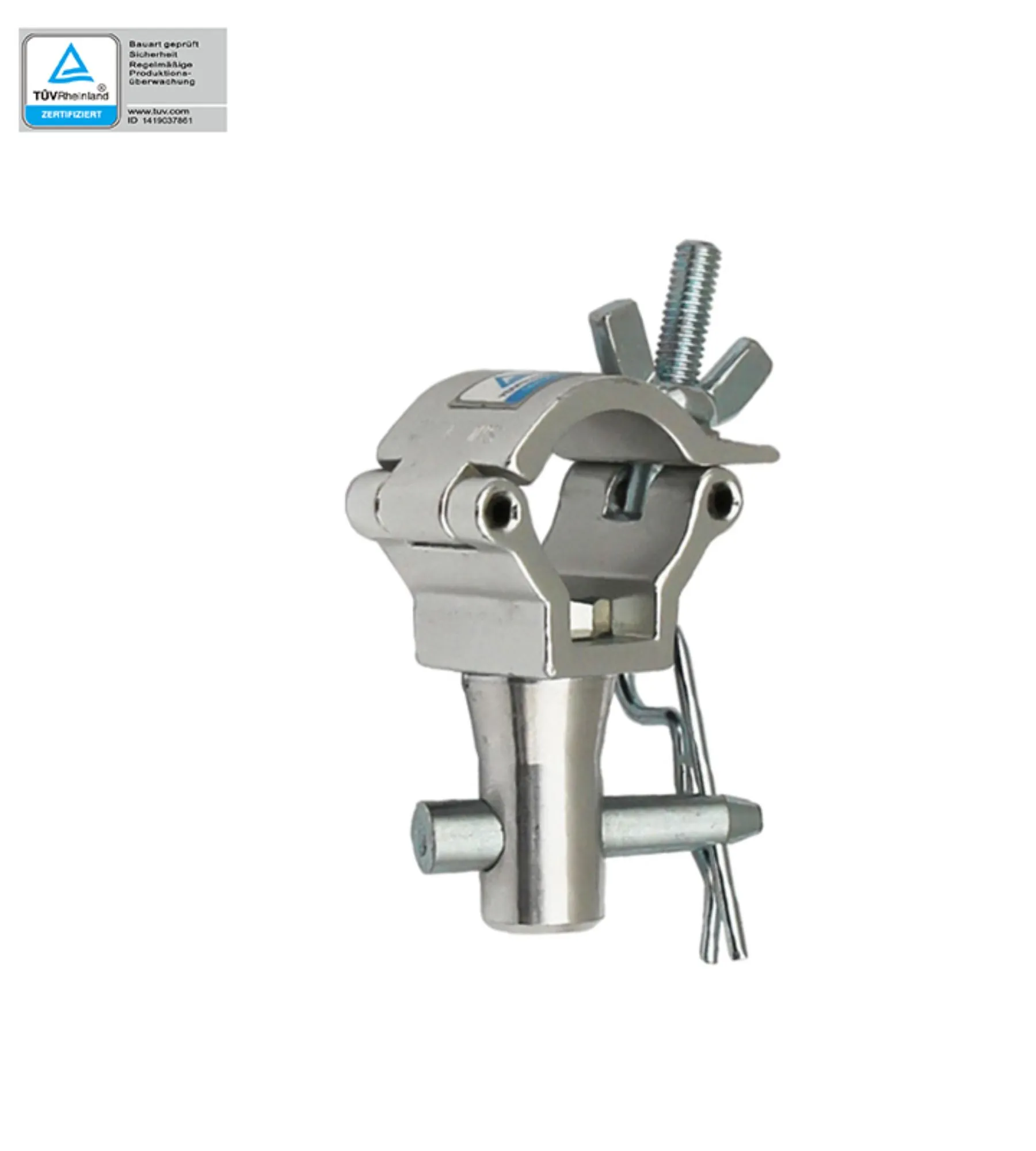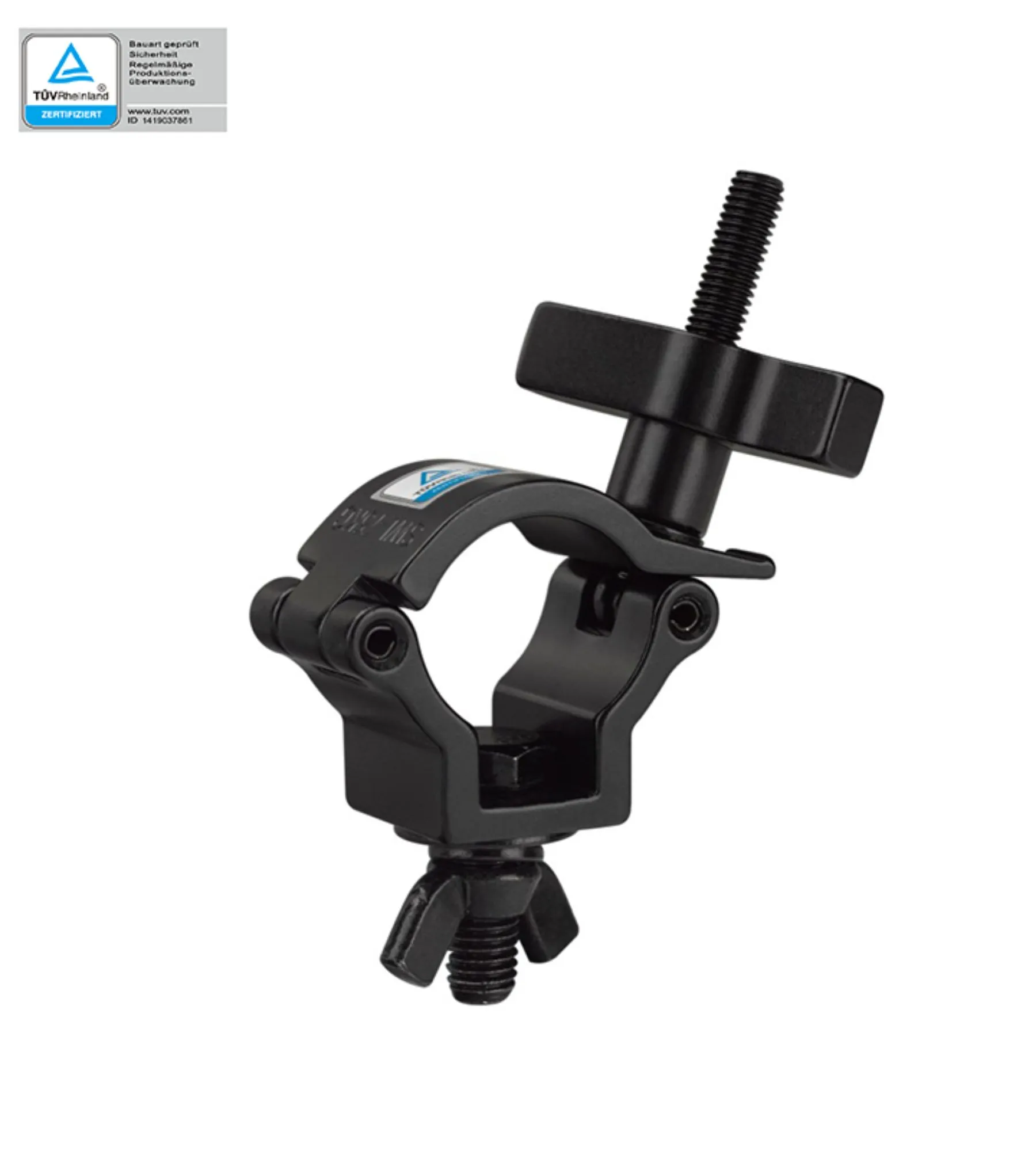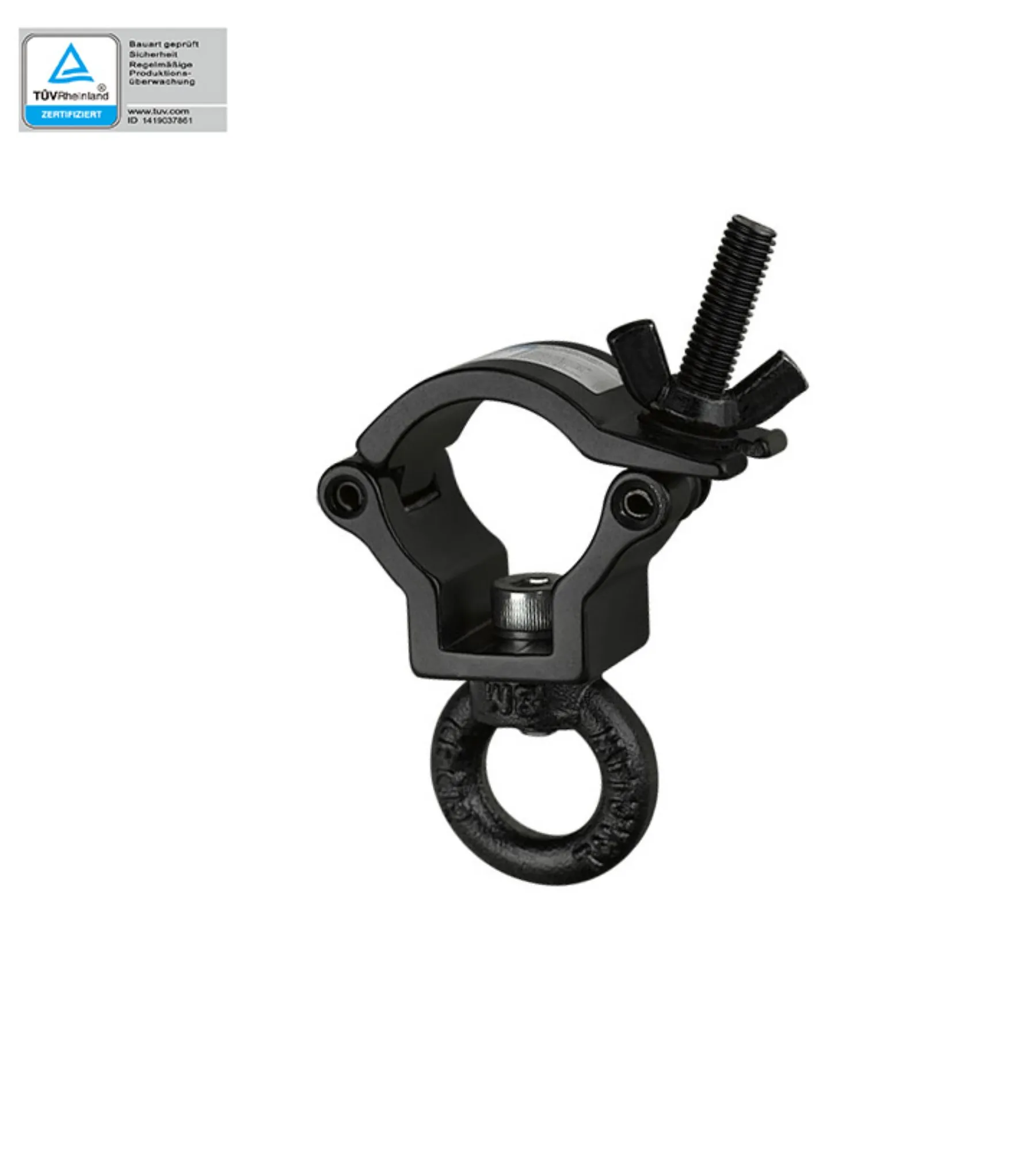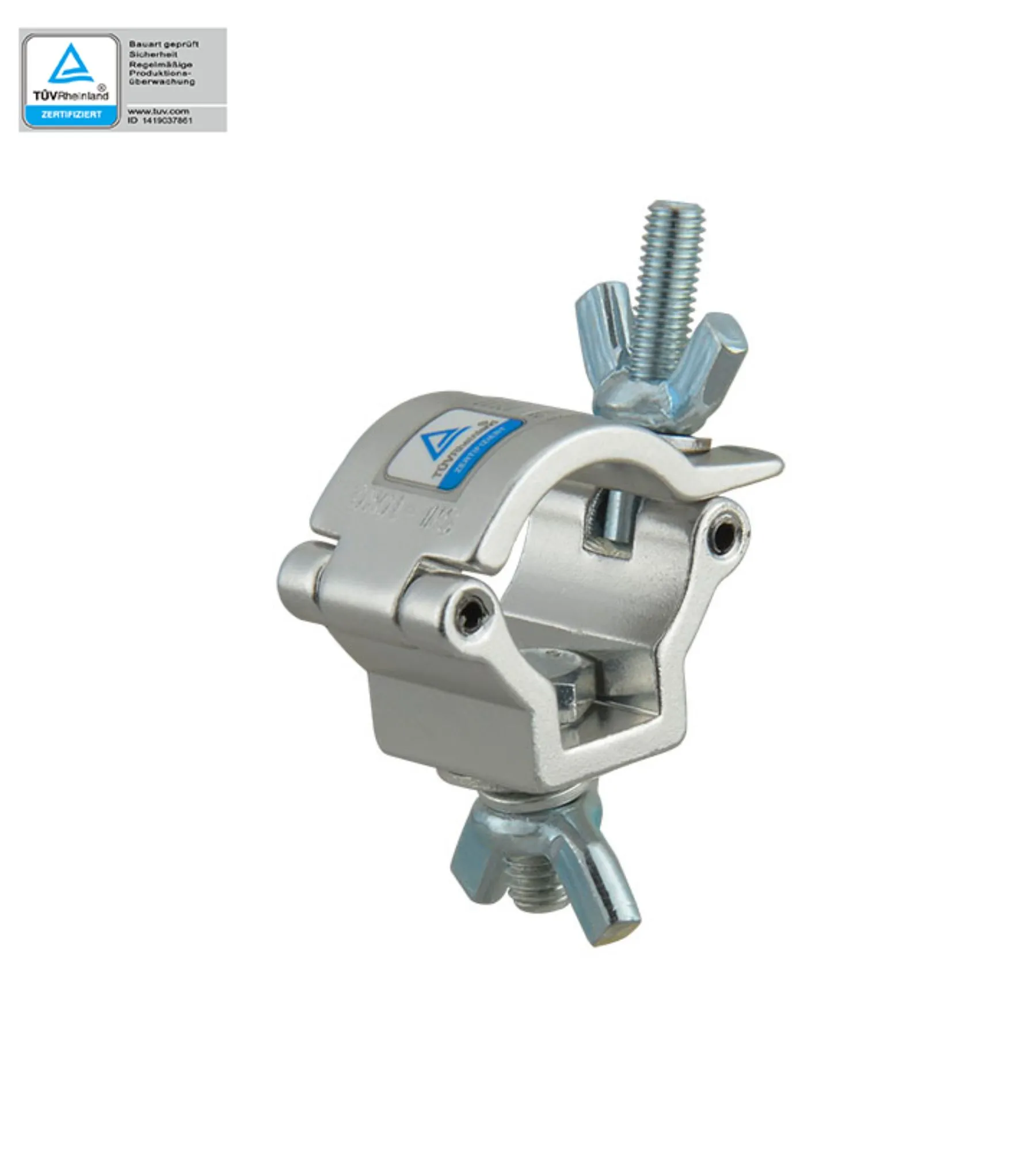
Lighting clamps, often the unsung heroes behind the scenes of any spectacular stage production, embody unparalleled versatility in their functionality. These indispensable tools play a pivotal role in securely mounting and positioning lighting fixtures onto trusses or stands during a diverse array of events, ranging from grand concerts to theatrical performances and immersive productions. With a design ethos rooted in adaptability, lighting clamps come in various types, such as hook clamps and half couplers, catering to the diverse needs and preferences of lighting professionals. Their significance lies not only in the physical support they provide but also in the creative latitude they afford, facilitating the realization of precise and dynamic lighting setups that elevate the overall visual impact of any production.

Our dedication to innovative excellence in the dynamic world of stage production, is a cornerstone and it is portrayed most vividly by our lighting clamp technology which stays at the forefront. These clamps are the latest developments in this arena, carefully made through an amalgamation of creative design and precision engineering. Our aim is to offer lighting professionals solutions that not only meet but surpass evolving demands within the industry. They have been engineered with flexibility, reliability, and seamless integration as guiding principles; serving as signs of innovation heralding a new era of technological brilliance for stage lighting around the globe. From extravagant concerts or theatrical performances to immersive productions; these become indispensable elements in order to take visual spectacle up a notch.

Our lighting clamp craftsmanship is built around precision engineering as we endeavor to ensure the best performance. Precision engineered adjustable jaws or brackets allow lighting setups to be seamlessly customized. As a result, it becomes easier to install lights and also gives lighting people the ability to change angles and set up in order for them to figure out what type of light works well enough for them. This marriage between form and function takes our clamps into a completely different class from being mere accessories; rather they are vital parts that ensure visually stunning performances go off without a hitch. Our lighting clamp design places emphasis on precision as its guiding principle throughout ensuring that form and function are in harmony with industry standards.

We have designed our lighting clamps for the purpose of enhancing creative arts in the sky. This feature distinguishes it by allowing the light designers to switch from horizontal position to vertical position and vice versa, which enables them to expand their artistic horizons. Our Clamp Light’s bi-directional movement helps artists place luminaries exactly where they want them to go in order to generate a particular mood or visual effect. They make lighting more refined as well as improving how it interacts with audiences; thereby proving that our versatile adjustable lighting clamp is a must-have tool for those who aim at breaking out of boundaries and expanding ones creativity. The dynamics of double-axis adjustability serve as a matchstick igniting new dimensions of stage creativity.

This is to say that stability is not an aspect but it is the main promise that has been woven into the design philosophy of our lighting clamps. Made with attention to detail, these clamps are created to offer stable and secured mounts for lighting fixtures. Stability is further improved by incorporating locks in order to prevent any chances of unexpected movement during performances. Whether it’s dealing with massive moving heads, complex light set ups or intricate stage designs, our lighting clamps become unshakeable guardians for equipment and artists’ safety. Guaranteeing stability thus becomes a symbol of our dedication to ensuring effective illumination solutions that prioritize both performance and safety.

Shenzhen Changjianshun Science and Technology Co., Ltd, strategically located in Shenzhen, the forefront city of China's reform and opening up, specializes in the production and sales of stage lamp hooks and hardware. Our company, equipped with a dedicated R&D and sales team, boasts a workforce of over 100 employees and operates from a modern facility spanning 3000 square meters, which includes an independent testing laboratory. Having achieved the IS09001 quality system certification in 2011 and TUV safety certification for our stage lamp hooks from Rhine, Germany, we are unwavering in our commitment to providing the safest and most reliable products to every user.
With a rich history of 12 years in the field of light hooks and trusses, we take pride in delivering products of first-class quality, backed by excellent service and professional technology. Our product line exhibits wide adaptability, catering to diverse environments and occasions. Crafted from high-quality metal materials, our offerings boast exceptional corrosion resistance, wear resistance, and a prolonged service life.
Experience the ease of comprehensive customization services that provide a one-stop solution for all your requirements.Our commitment is to deliver tailored experiences from concept to delivery, ensuring seamless satisfaction of your unique needs.
Rest assured with our steadfast commitment to safety. With IS09001 quality system certification since 2011 and TUV safety certification for our stage lamp hooks from Rhine, Germany, we prioritize delivering products that exceed the highest safety standards, ensuring reliability for every user.
Benefit from our extensive 12-year experience in light hooks and trusses. We take pride in delivering top-notch quality, excellent service, and professional technology. This commitment reflects our profound industry knowledge and years of valuable experience.
Our light hooks and truss products feature versatile adaptability, addressing diverse requirements in various environments and occasions.Experience the flexibility of our offerings, seamlessly integrating into different settings to provide tailored solutions for every application.
We offer versatile lighting clamps, including hook clamps and half couplers, ensuring secure attachment to trusses with varying diameters.
Our lighting clamps are designed to support substantial weight capacities, ensuring the safe and reliable suspension of lighting fixtures during performances or events.
Absolutely, our lighting clamps are designed to be compatible with industry-standard trusses, providing seamless integration and ease of use for diverse stage and event setups.
Yes, our lighting clamps offer flexibility with dual-axis adjustment capabilities, enabling seamless transitions between vertical and horizontal mounting orientations for enhanced versatility.
